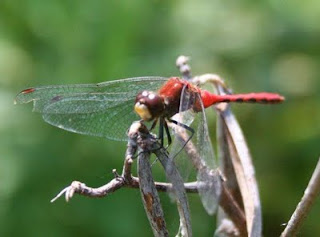It's a wonderful guide, and such a nifty idea that Oxford U Press published Butterflies Through Binoculars (Western North America) by Jeffrey Glassberg the following year.
No field guide to bees through binoculars yet. Nor beetles. But you don't need a field guide. This summer take a few minutes to watch the world of flying things through a pair of binoculars. What do you learn about these summer fliers? How do butterfly wings compare to beetle wings? What sort of flight patterns can you find?
 If you spend some time watching dragonflies this summer, consider becoming a "citizen scientist" to collect information for Dragonfly Pond Watch.Friday! Check out more STEM Friday books and resources here.
If you spend some time watching dragonflies this summer, consider becoming a "citizen scientist" to collect information for Dragonfly Pond Watch.Friday! Check out more STEM Friday books and resources here.





.jpg)
